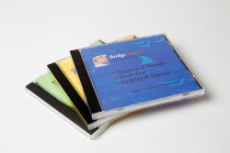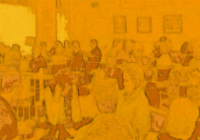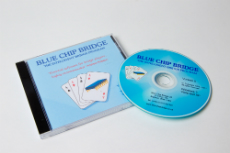Which card should declarer play
When declarer possesses two (or more) cards that are adjacent (eg a king and a queen) then they have equal value. It may seem of little relevance which one he chooses to play. Not so!
South Deals
E-W Vul |
|
♠ |
7 5 4 |
|
♥ |
K Q J |
|
♦ |
A J 10 9 8 |
|
♣ |
4 2 |
|
|
♠ |
A K 6 |
|
♥ |
10 8 7 5 4 2 |
|
♦ |
6 4 |
|
♣ |
8 7 |
|
|
|
♠ |
Q 9 3 2 |
|
♥ |
6 |
|
♦ |
K Q 2 |
|
♣ |
Q J 10 9 5 |
|
|
|
|
♠ |
J 10 8 |
|
♥ |
A 9 3 |
|
♦ |
7 5 3 |
|
♣ |
A K 6 3 |
|
|
West |
North |
East |
South |
|
|
|
|
1 N |
|
Pass |
2 N |
Pass |
Pass |
|
Pass |
West led ♥ 5 and declarer overtook dummy’s ♥ J with ♥ A to lead ♦ 3 to dummy’s ♦ 8. East won ♦ Q and, realising from observing dummy’s ♥ KQ that there was no future in returning partner’s lead, naturally switched to his fine ♣ suit. He led ♣ Q - top of a sequence - but declarer played ♣ K which held the trick and led ♦ 5 to ♦ 9. East won ♦ K and paused to reflect. His ♣ switch had not worked too well - it was clear declarer also held ♣ A because his ♣ K had won the trick (if West held ♣ A he would have beaten ♣ K with it). There was only one suit left for East to lead - ♠s. He led ♠ 2 and West beat ♠ 10 with ♠ K, cashed ♠ A and led ♠ 6. East won ♠ Q and cashed ♠ 9 - the setting trick.
But it would all have been different if declarer had won East’s ♣ Q switch with ♣ A (not ♣ K). Now East would have had no way of knowing who held ♣ K and might easily have persisted with ♣s when he won ♦ K. And then declarer would have made his contract - three ♥s, three ♦s and ♣ AK making up his eight tricks.
ANDREW’S TIP: As declarer, play the highest of touching cards to leave the defenders in the dark.






